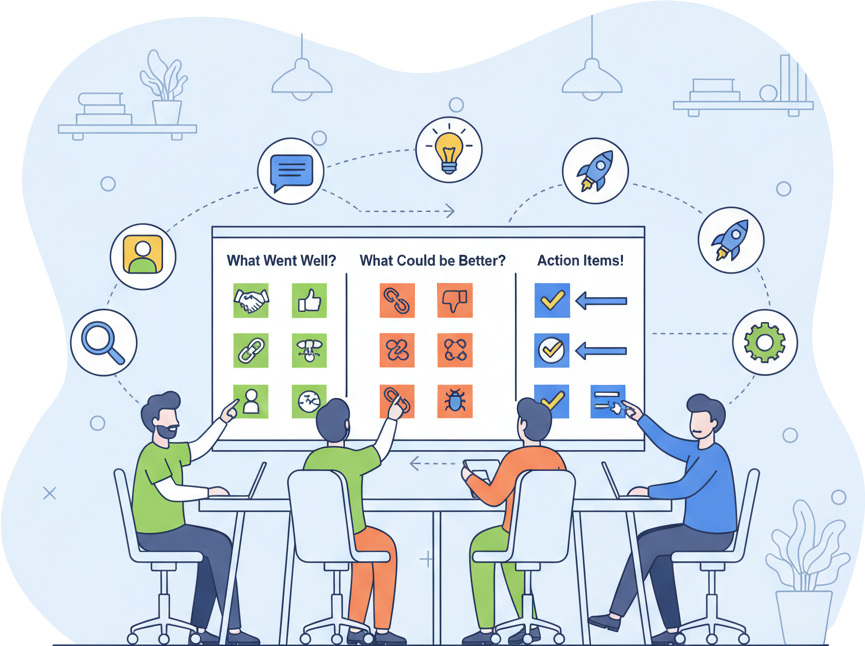Now Reading: Agile Affinity Mapping: Agile Case Study
-
01
Agile Affinity Mapping: Agile Case Study
Agile Affinity Mapping: Agile Case Study
Breaking the Cycle: How One Team Ran a More Effective Sprint Retrospective
A Scrum Master used the planner to structure a retrospective that moved beyond surface-level complaints to identify and address a deep-rooted process bottleneck, boosting team morale and velocity.

The Challenge
The development team’s retrospectives had become stale and unproductive. They repeatedly identified the same minor issues (‘not enough comments in the code’) without tackling the bigger, underlying problems that were truly slowing them down. Engagement was low, and the team saw the meeting as a formality rather than an opportunity for genuine improvement.
The Process: From Chaos to Clarity
Before the Planner: Gathering Raw Data
The raw data for this event was the team’s direct experience during the last two-week sprint. The Scrum Master asked everyone to come to the meeting prepared to discuss three classic prompts: ‘What went well?,’ ‘What didn’t go well?,’ and ‘What can we improve?’
Step 1: Prepare for Affinity Mapping
The “Prepare” step in the planner was used to set a powerful goal: “Identify one significant, actionable improvement for our development process that we can implement in the next sprint.” The plan was for a standard 60-minute retrospective with the full 7-person development team.
Step 2: Conduct the Mapping Session
The “Conduct” plan added much-needed structure. The team would spend the first 10 minutes silently writing their thoughts on sticky notes for the three categories. Then, they would spend 20 minutes grouping similar notes on a whiteboard. This ensured everyone contributed, not just the most vocal members.
Step 3: Analyze and Prioritize Groups
This is where the planner added the most value. For the ‘Analyze’ step, the Scrum Master planned to use a ‘fishbone diagram’ (or Ishikawa diagram) to explore the root causes of the largest group of ‘what didn’t go well’ notes. This was a deliberate choice to force a deeper, more systematic analysis than their usual unstructured discussion.
Step 4: Implement and Monitor Actions
In the “Implement” step, the plan was to formulate the outcome of the fishbone analysis into a single, concrete action item. This item would be added to the top of the next sprint’s backlog, treating it with the same importance as a product feature. The success metric would be a simple team vote (1-5) on its effectiveness in the next retrospective.
After the Planner: Running the Workshop
The report provided the structure the Scrum Master needed to confidently guide the session. The initial affinity mapping exercise quickly revealed a large, angry-looking cluster of notes around “unplanned work” and “constant interruptions.” The fishbone diagram then helped the team trace the root cause back to a poorly defined process for handling urgent bug reports from the support team. The resulting action item was to create and pilot a dedicated “on-call” rotation for handling support escalations.
The Results
By introducing a more structured analysis phase, the planner helped the team break out of their retrospective rut. They stopped admiring the problem and started solving it, leading to a tangible process improvement that had an immediate impact.
- Identified and addressed a core process issue that had been frustrating the team and hindering productivity for months.
- The new “on-call” process reduced context-switching and increased developer focus, leading to a 10% increase in story points completed in the following sprint.
- Team morale and engagement in subsequent retrospectives visibly improved, as they saw their feedback led to real change.
- The “fishbone diagram” technique became a recurring tool for the team to diagnose complex problems.

